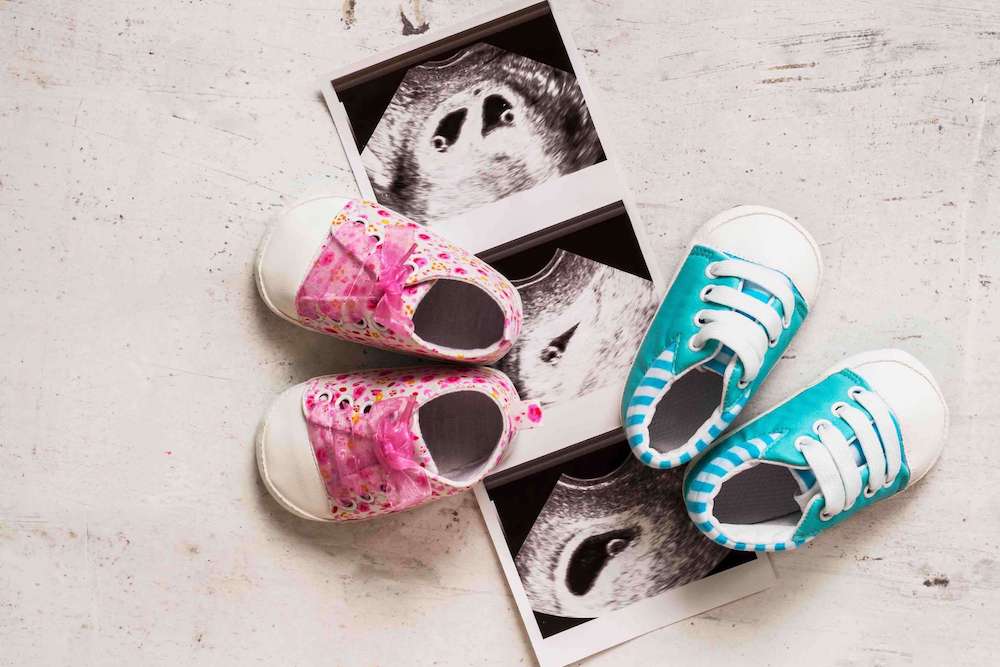Two twins in one sac? You might never have heard about this. Might never have thought about it. You might not even have realised that this was possible. But it can happen.
It’s incredibly unlikely, but in any case of twins there’s a small chance that your twins could be sharing the same sac, as well as the same womb. What causes it, what does it mean, and what can you do about it? Read on to find out!
Multiple Gestation Pregnancy: What Causes Both Twins in One Sac?
If your twins are both in the same amniotic sac, your doctor is going to tell you in your twin pregnancy ultrasound. Twins sharing an amniotic sac is caused by the fertilized egg that’s going to become an embryo splitting very late into term.
The medical term for this is mono-amniotic mono-chorionic twins, which literally means that your twins share an amniotic sac and a placenta. You will also hear this called mono-mono twins, or sometimes even mo mo twins.
What Does This Mean for Your Twins?
Firstly, mono mono twins are always identical, so if you wanted identical twins, congratulations!
It’s unfortunate, but mono mono twins are the riskiest form of pregnancy, with the highest chance of issues forming that require medical intervention.
This is because your twins are literally right next to each other within your womb. In all other types of twin pregnancy the twins have separate amniotic sacs, which means there’s a barrier between both babies.
Mono mono twins don’t have this, which puts them under threat from things that wouldn’t affect other types of twin.
As soon as it’s discovered that you’re carrying mono mono twins, then you should be referred to a perinatologist; a doctor that specialises in high risk pregnancies.
What Are the Risks of Complications for Your Identical Twins?
Because both twins are in the same environment with no barriers to separate them, there’s several problems that can be caused that you wouldn’t see in any other kind of pregnancy, including:
- Cord entanglement: This is the most common type of issue you’ll see in mono mono twins, and it’s caused when one twin becomes entangled in the other’s umbilical cord. Sometimes, this won’t cause problems, but in certain situations like neck encirclement, it can be life threatening. It’s a situation your doctor will monitor closely, including potentially bringing you into hospital for constant scans.
- Cord compression: Because they’re so close, it’s possible for one twin to put pressure on the cord of the other and prevent the flow of nutrients and blood. Over a long enough period, this can cause serious harm to the fetus which is being denied the things it needs to grow.
- Twin to twin transfusion syndrome: Because your babies share a placenta, there’s a chance one of them will receive more blood than the other. If this is discovered early, there are now ways to treat this, with an incredibly high success rate.
You’re also more likely to have a premature birth or preterm labor with mono mono twins, and mono mono twins tend to have a lower birth weight even than standard twins, which is already generally lower than single babies.
Bear in mind that twins, especially mono mono, are also far more likely to be delivered by C-section. Just something to consider if you’ve got your heart set on a natural birth.
What Can You Do?
The best thing you can do for your twins is try and relax, cut stress out of your life, eat well and live as healthily as possible. Your doctor will recommend anything specific that you need to do, so in the meantime just do what you can.
If you’ve been told that you’re having mono mono twins, then don’t worry. Your doctor will be doing everything he can to make sure your pregnancy is as calm and problem free as possible. But the more you know, the more you can do to make sure that your pregnancy goes as smoothly as possible.
Bear in mind that you’re actually incredibly lucky, because even 20 years ago having both twins in one amniotic sac was a huge deal that could threaten the life of both mother and baby, but today, with all of our modern science and medicine, you’ve got by far the best chance possible of everyone pulling through and delivering two healthy, happy twins!
So take a look around our site, because we’ve got all the information on twins you could ever ask for. And if you’ve got any questions about both twins in one sac, drop them in the comments below or let our wonderful community find an answer!








 Store
Store
My twin girls are mo mo twins! It was a very stressful pregnancy right after a miscarriage but December 29,2010 we had two beautiful little girls! They weighed 3.7 and 3.11! Only in hospital one week!
Just found out my daughter is having mono mono twins.
I cried when the nurse told me about the twin in same sac and high risk i am really really looking forward on seeing them..i dont want to loose them i am worried please help me
I know. I found out end of January 2018. I am a bit concerned as well.
My girls were born 22.5 years ago…. mono-amniotic/mono-chorionic, with twin to twin transfusion syndrome. They were born 5.11 and 4.13 at 36 weeks – vaginally! There was an 11% discrepancy until they were about 10, but no other signs of any abnormalities. When I was first told at 5.5 mos. that they were mo-mo (with no dividing membrane) I cried for days. I still cry today, but happy tears – for all of their accomplishments and successes. Today they are happy, healthy college grads!
I had mo-mo twin boys 15 years ago. They were born vaginally at 36 weeks 5lbs 10 oz & 5 lbs 8 oz and they went home with us 2 days after their birth. I was 37 yrs old when I gave birth to them.